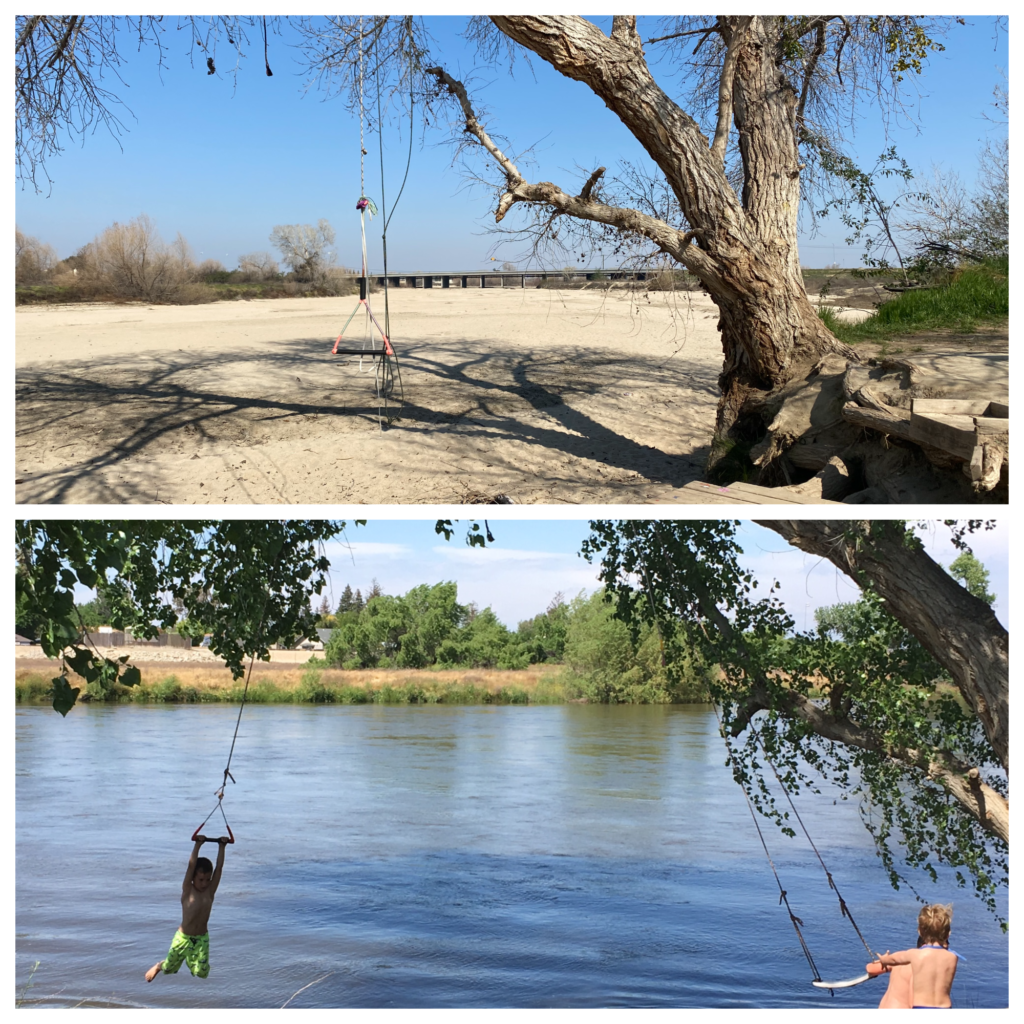Kern County Superior Court Judge Gregory Pulskamp made one thing clear during the latest hearing on the twists and turns of the Kern River’s flow: He did not intend to expand the City of Bakersfield’s water rights under his November ruling that mandated enough water must remain in the river channel for fish populations.
That amount was set at 40% of the river’s flow as measured at Hart Park.
“The court’s intention was clear,” Pulskamp said Thursday during a give and take with Bakersfield’s attorney Colin Pearce. “By creating a new water right – call it a carve out – for public trust flows, the court’s intent was to take that out of allocations that were not for city municipal use. But I never intended to expand the city’s water rights, either.”
Pearce insisted the city isn’t taking more than its share, though it has jumped ahead of other water users in the long-held river distribution line. It had to get the first cut in order to make sure it would have enough under the new flow regime to satisfy residents’ needs, he said.
“It looks, on paper, like we’re getting more,” Pearce said. “But we’re just getting the water ahead of everyone else. But it’s not any more than we’ve historically received.”
Agricultural water districts with rights to the river strenuously disagreed and showed charts that suggest the city is on track under the judge’s order to take more than double the average annual yield under its rights.
“It’s a spectacular water grab,” said Scott Kuney, attorney for North Kern Water Storage District.
The ag districts are seeking to overturn Pulskamp’s temporary injunction and implementation order. A third motion filed by Water Audit of California was also heard Thursday. That motion seeks to keep 200 cubic feet per second in the river pending flow stoppage as repairs are made to the power plant at the base of Isabella Dam.
Pulskamp did not issue a ruling Thursday. He said to expect one in the near future.
His temporary injunction and follow up implementation order made history on the river earlier this fall.
Several public interest groups sued Bakersfield in 2022 for dewatering the river. When fish reemerged in normally dry stretches of river through Bakersfield this year, the groups filed for a temporary injunction to keep water in the river.
Pulskamp granted the temporary injunction based on California state law that says dam owners/operators must make sure enough water continues flowing downstream to keep fish populations in good condition.
While the ag districts weren’t happy with the so-called fish flows, they were outraged when the city began taking an extra 180 cubic feet per second on top of its existing rights in mid-November and filed motions to reconsider and stay the injunction and order.
Pulskamp pointedly reminded attorneys representing the ag districts that the injunction is temporary, intended to last through the ongoing lawsuit against Bakersfield by the public interest groups.
After attorneys repeatedly insisted the 40% flow order should be halted until it is subjected to an “evidentiary hearing,” Pulskamp told them: “That’s what we call a trial.”
He rapidly asked each attorney if they were ready to go to trial, as he was happy to oblige. None were.
Pulskamp was also keenly interested in what happens to that 40% flow as it makes its way down the river.
“Doesn’t it percolate down and recharge the aquifer and is available to the ag districts to pump out?” he asked of the ag district attorneys. “It’s not a net loss is it? It’s not like it goes away, it’s still there in the basin to be used by the various districts.”
That’s true, they said. But in some cases the districts aren’t close enough to take immediate advantage of that refreshed groundwater. More importantly, that water would need to be tracked to make sure users weren’t pumping someone else’s recharged Kern River water.
Meanwhile, releases from Isabella Dam began ramping down Thursday for repairs to the power plant. Plant operators, Isabella Partners, had requested the Army Corps of Engineers drop releases to just 25 cfs, which could decimate downstream fish.
Pulskamp’s order doesn’t apply to the Army Corps. Still, Isabella Partners had postponed repairs and was working with public interest groups find a resolution that wouldn’t harm downstream fish populations. It’s unclear if a resolution was reached.
Share this:
- Click to share on Facebook (Opens in new window)
- Click to share on Twitter (Opens in new window)
- Click to share on LinkedIn (Opens in new window)
- Click to share on Reddit (Opens in new window)
- Click to share on Tumblr (Opens in new window)
- Click to share on Pinterest (Opens in new window)
- Click to share on Pocket (Opens in new window)
- Click to share on Telegram (Opens in new window)
- Click to share on WhatsApp (Opens in new window)
- Click to print (Opens in new window)







